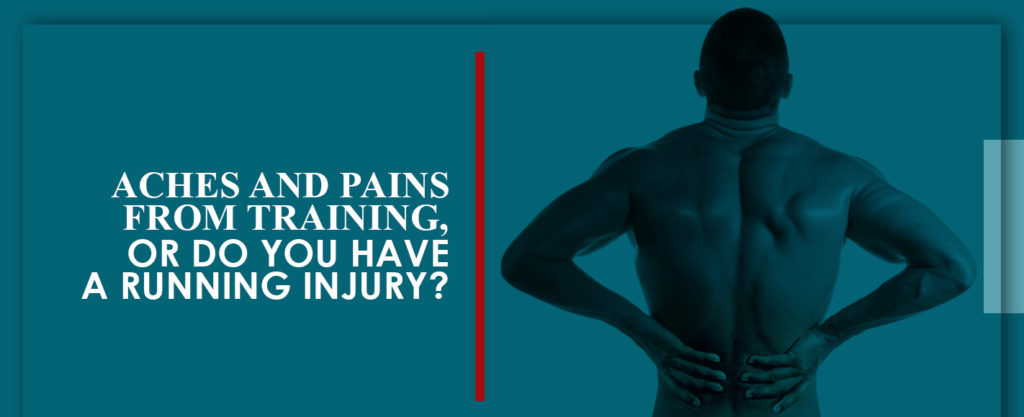
In this article:
- Are Body Aches and Pains From Training Normal?
- How Common Are Running Injuries?
- Signs You’re Overrunning
- Common Aches and Pains From Running
- Types of Running Injuries and Their Symptoms
- Treatment for Running Injuries at OIP
Wondering Why You Have Pain When You Run?
Running can be one of the most effective ways to directly benefit from exercise. Along with the potential to burn calories and lose weight, running can also benefit the body by improving cardiovascular and cognitive health. Many studies show consistent running can help an individual live a longer life. With a list of positive health benefits, it’s no wonder why running is a popular exercise that is part of a variety of training programs for a wide range of sports.
Those who integrate running into their daily or weekly exercise regimens may expose themselves to negative health impacts. Like all other forms of exercise, running can irritate or harm the body. Intense running, prolonged running or even improper running can cause the muscles and joints mild to severe damage. If you are feeling aches and pains throughout your body after training, and wondering, “Why do you have pain when you run?” it’s essential to determine the cause of the discomfort. Though some symptoms are common, others can be the result of a running injury.
The Orthopedic Institute of Pennsylvania is one of Central PA’s top health care practices. We take great pride in providing compassionate and caring service to patients suffering from pain associated with the injuries running and rigorous physical training can cause. Our physicians believe knowledge is key to responsible exercise, which is why we’ve identified common symptoms that may or may not be indicative of a running injury. If you experience lasting pain that may have been the result of a training injury, we encourage you to schedule an appointment.
Are Body Aches and Pains From Training Normal?
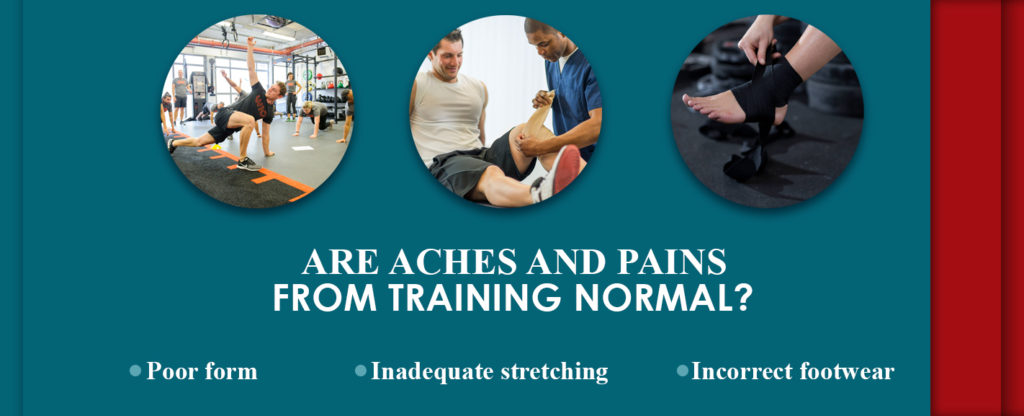
Although exercising does provide the body with many health benefits, part of this process does involve some pain or discomfort. Muscle soreness can be a positive sign that your muscles are beginning to grow and develop. However, soreness can also be a sign that your muscles or joints are negatively receiving stress that could lead to aches, pains and potentially even an injury. There are a variety of causes of running injuries:
- Poor form — If you are experiencing discomfort in your shoulders, back, arms or neck while running, your more significant could be the issue. Slight issues with your neck positioning, keeping your arms rigid or poor chest and shoulder posture could cause aches.
- Inadequate stretching — If you’re not properly stretching throughout any portion of your training program, you may begin to experience muscle soreness during or after your run.
- Incorrect footwear — Not only does your form influence your ability to run correctly, but your choice of footwear also impacts your performance. Shoes that are worn-out or old may no longer provide you with the support your muscles and joints need. Even new shoes can cause you discomfort if they do not fit correctly.
How Common Are Running Injuries?
Slight aches and pains are typical for those who integrate running into their training programs. Many of these symptoms are signs the body is improving in a healthy way. Unfortunately, even mild aches and pains could be symptoms of a much more serious health issue. Muscle and joint injuries are quite common among runners, and these ailments can range from temporary discomfort that requires rest to chronic pain that requires medical intervention.
Broadly, there are four separate categories of runners, based on the prevalence of their exercise. Marathon runners are the most intense of the group, and more than half these individuals suffer an injury each year. Only 32 percent of long-distance runners face running injuries annually, while 27 percent of novice runners incur injuries. However, novice runners are twice as likely to sustain an injury than those who run recreationally.
Regardless of whether an individual is focused on running or uses this exercise as part of their training regimen, all athletes can sustain an injury from running. Those who are beginning to run or are increasing their speed or distance may overextend themselves and cause physical pain. Even experienced runners and longtime athletes can suffer an injury due to overrunning.
Signs You’re Overrunning
Although exercise is healthy, too much exercise can be damaging to the body. Overtraining by overrunning could lead to minor aches and pains or major injuries to your muscles and joints. However, there are also other ways your body may alert you that your exercise routine is harmful. Signs that you may be overrunning include:
- Changes in mood — Too much exercise can cause the body to limit the production of certain hormones that help regulate your mood. Without these hormones, you may find yourself more irritable or stressed than normal.
- Frequent sicknesses — Improperly increasing the intensity or duration of your workout could negatively impact your immune system, opening your body up to the added potential of contracting viruses.
- Constant fatigue — Hormone changes that increase your stress level can also prevent you from getting the proper amount and quality of sleep you need, leaving you feeling regularly fatigued throughout the day.
- Trouble sleeping — Another way an excess of exercise impacts your body is by disrupting your body’s circadian rhythms, causing you to have trouble falling and staying asleep.
- Heaviness in the legs — Lack of sleep also prevents your muscles from healing correctly after each exercise routine. If you don’t give your muscles time to recuperate, you may feel soreness when you attempt to exercise again.
Common Aches and Pains From Running
There are many areas of the body where you may feel mild or moderate discomfort while running. Many of these symptoms will present themselves below the waist as pain in your legs, feet, thighs, shins, knees or ankles after running. Aches and pains may be apparent before, during or after exercise. Some discomfort may immediately dissipate when activity ceases, while other irritations may linger for days or weeks.
Runner’s Knee
Patellofemoral pain syndrome, more commonly called runner’s knee, is a common condition among those who engage in high amounts of cardio activity. Over-exercising or abnormal tracking of the kneecap could cause symptoms which include dull pains at the front of the knee and popping or cracking sounds when the knee is in motion. These symptoms can be apparent during exercise or regular daily activity.
Shin Splints
There is a close association between running and this common exercise problem, and runners especially are at a higher risk of feeling this discomfort. Shin splints can develop when novice runners overextend themselves as they begin exercising, or when consistent runners change the intensity or duration of their workouts. When the muscles, tendons and bone tissue around the tibia bone become stressed from overwork, they cause the runner to feel pain around the area where the muscles connect to the shin bone.
Sudden changes in the intensity of duration of physical activity can cause shin splints. Individuals who are naturally flat-footed or who are using inadequate footwear may develop this discomfort. Symptoms include sharp or dull throbbing during or after exercise and when touching the area. Shin splint symptoms may also be signs of chronic exertional compartment syndrome, which occurs when the pressure in the shin muscles builds.
Plantar Fasciitis
As the most common cause of pain on the bottom of the heel, plantar fasciitis results from the tissues on the arch of the foot becoming irritated and inflamed from damage or tearing. Though this can occur in any individual, certain risk factors like high-impact or increased activity can increase the likelihood of symptoms. Pain or discomfort usually occurs after exercise or after long periods of inactivity.
Muscle Strain
A muscle strain, or a pulled muscle, is a familiar muscular condition athletes and nonathletes can face. A strain occurs when muscles or tendons get stretched or torn. Most mild strains may include symptoms like pain, muscle spasms, swelling around the area or the inability to move the affected muscle. Muscle strains can occur in all parts of the body.
Though the issues above are common training injuries and causes of pain when running, their symptoms may also be signs of a more serious underlying problem. If you experience pain or discomfort in your lower extremities before, during or after your run, we suggest you consult a physician. The doctors at the Orthopedic Institute of Pennsylvania specialize in evaluating, diagnosing and treating joint, bone and muscular conditions runners and other athletes engaging in rigorous training may face. We invite you to contact us and schedule an appointment.
Types of Running Injuries and Their Symptoms
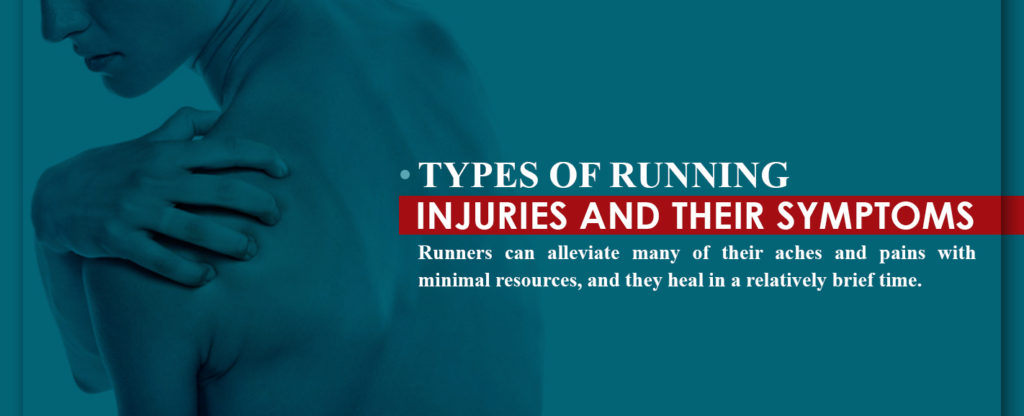
Runners can alleviate many of their aches and pains with minimal resources, and they heal in a relatively brief time. Some of these conditions won’t require the individual to alter their exercise routine heavily. However, larger issues like injuries may need more detailed treatment plans that could include surgical procedures.
Iliotibial Band Syndrome
IT band syndrome is a common cause of knee pain in those who exercise, and can be challenging to treat. Pain results when friction causes the band to become inflamed and begin to rub against the bone. Discomfort is typically between the hip and the top of the knee. However, because the pain can be challenging to pinpoint, a medical professional may mistakenly diagnose IT band syndrome as another injury like a lateral meniscal tear or stress fracture.
Achilles Tendonitis
Achilles tendonitis is a common condition in which the Achilles tendon becomes irritated and inflamed from repeated stress. Depending on which part of the tendon it affects, this condition could manifest in one of two ways. Noninsertional Achilles tendonitis causes the middle portion of the tendon to tear, swell and thicken. Insertional Achilles tendonitis affects the lower part of the tendon and may cause bone spurs. Both forms of Achilles tendonitis may also cause the tendon fibers to calcify.
Stress Fractures
Stress fractures are some of the most common injuries athletes face due to overuse. Increased frequency or intensity while running or doing other forms of cardio can cause these fractures, as can other stressors like hard surfaces, improper equipment and added stress on the bones. More than half of stress fractures occur in the bones of the lower leg, placing runners at an increased risk. Pain is present during activity and recedes with rest. Untreated stress fractures could become breaks if runners place more stress on the area.
How to Tell the Difference Between a Running Injury and Normal Discomfort From Running and Rigorous Training
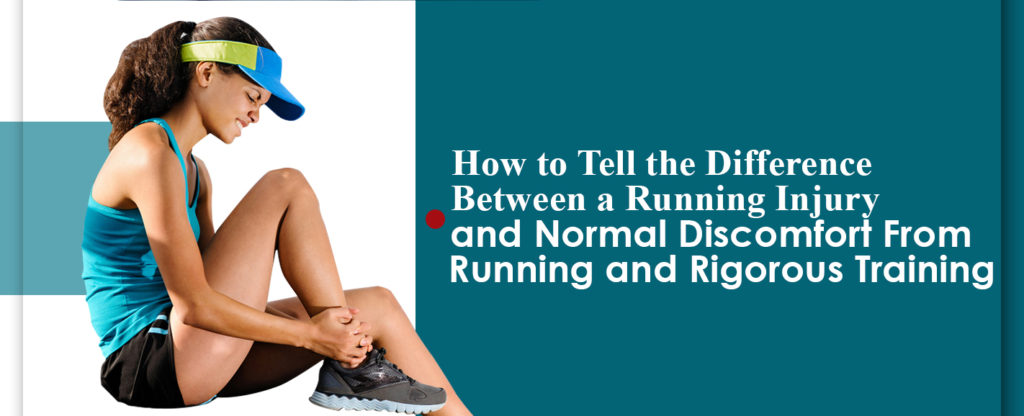
It can be difficult to determine whether the discomfort you’re feeling during or after your workout is a typical case of muscle soreness, or if you’ve sustained an injury. Though each case is unique, some features can help you begin to distinguish injury pain from soreness and discomfort.
Features of Aches and Discomfort
- The sensation is tender and burning during exercise, but dull at rest.
- The onset of the pain occurs during exercise or within the first one to three days of exercise.
- The feeling lasts for two to three days before getting better.
- The pain is only in the muscles.
Features of Pain
- The sensation is sharp and acute at rest and during exercise.
- The onset of the pain occurs during exercise or within the first day of exercise.
- The feeling does not lessen or go away on its own.
- The pain is in the muscles, as well as deeper in the joints.
Each person has a different tolerance for pain, and because many of these injuries could be masking themselves as mild soreness, it’s crucial to assess your symptoms before exercising again. If you believe your aches could potentially be a running injury, ask yourself the following questions:
- Has your performance suffered because of the pain? Everyone has an off day, and it’s natural that your body may perform amazingly one day and averagely the next. However, if you see your performance consistently suffering as a result of this pain, it may be an injury. For instance, if your typical routine involves a five-mile run, but pain in your knee or lower leg prevents you from achieving that milestone, you should consult a physician.
- Do you alter your stride to compensate for the pain? If you’ve had to change your gait to lessen the pain or its impact on you, you may have an injury. Not only is the untreated injury impacting your form, continuing to run improperly could cause new injuries to occur.
- Does the pain remain consistent or increase while running? It’s natural to feel a little tight or sore as you start your run, especially if you frequently train rigorously. If these aches don’t subside or become painful as you continue running, this may be a sign that there’s an underlying injury. Consider contacting a doctor if you have tightness or leg pain after running.
- Are your legs sore or swollen? Soreness and swelling are common after intense workouts, but when sharp pain accompanies swelling, it could be a symptom of much more. Always be aware of any inflammation that does not recede quickly.
- Does the pain stick with you when you’re walking normally? Although it’s natural to feel a little sore right after your workout, your body should recover quickly enough to allow you to return to your daily activities. If you’re having trouble walking around naturally or cannot complete daily activities because of the pain you feel, you could have a severe injury.
Treatment for Running Injuries at OIP
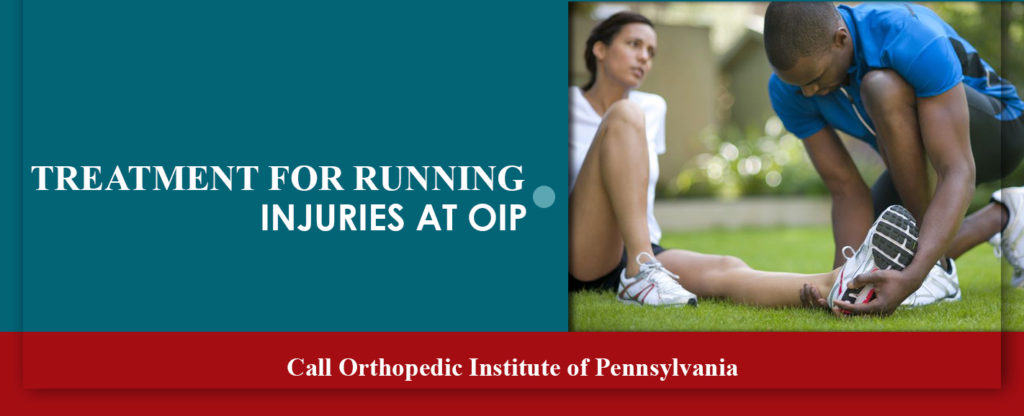
Those who integrate running into their exercise routine should expect to feel some level of discomfort during their training. Though many aches and pains of the muscles, bones and joints can be common, some of these symptoms can also be warning signs that a more serious injury has occurred. It’s essential for individuals who participate in all activity levels to know how to recognize the difference between ordinary discomfort and unusual pain. Thankfully, the specialists at Orthopedic Institute of Pennsylvania have the knowledge and experience to diagnose and treat these conditions.
Our team of compassionate doctors is prepared to treat your injuries through a variety of surgical and nonsurgical treatment options. We’re proud to provide care for fractures, pain management and orthopedic injuries to the knees, feet, ankles, spine and more. Visit our website to learn more about our services and the talented physicians who have cared for families throughout Central Pennsylvania for years. We service patients throughout the region with our practices conveniently located in Camp Hill, Harrisburg, Carlisle, Hershey, Millersburg and Newport.
Don’t risk causing further harm to your body by neglecting a running injury. Call Orthopedic Institute of Pennsylvania today to schedule an appointment with a physician and identify the cause of your pain.
Last Updated on 07/27/2022 by OIP


